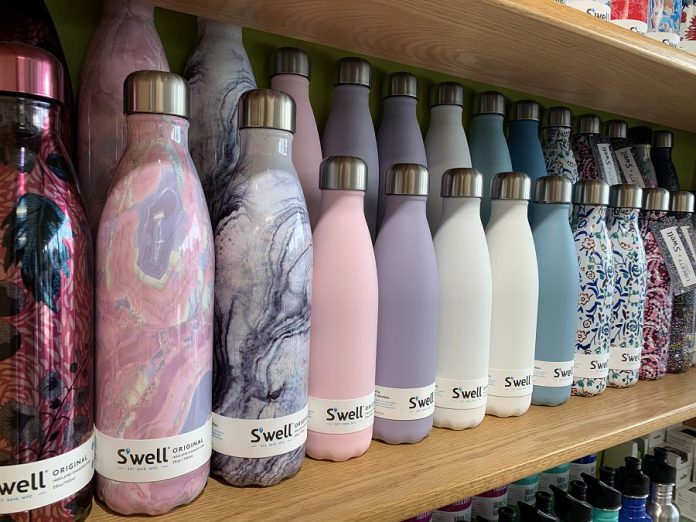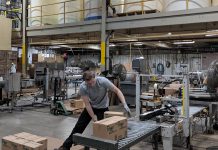
With the ongoing pandemic and the school year nearly here, I (like other parents I know) feel that things are difficult to balance.
As I think about back-to-school preparations, I appreciate that the packed lunch is still an easy and safe way to give my child nutritious food and some comfort from home during the school day. It’s also a manageable way we can balance our pandemic concerns with our environmental aspirations.
In an effort to help ease preparations, I am sharing 10 tips to make our lunches litter-less, while keeping things simple and safe during the pandemic.
1. Avoid pre-packaged products
Reducing waste inside the home requires us to change our habits outside of the home.
When we grocery shop, instead of reaching for a package of cheese strings, consider buying a brick of cheese and cutting it creatively. Rather than buying pre-packaged produce, opt for the unpackaged options and bring your own produce bags.
Consistently choosing lunch snacks that have limited or no packaging is a great way to reduce waste.
2. Involve your child in the lunch-packing process
Depending on their age, you can split the workload while encouraging independence and ownership.
When children have a voice and can choose their own lunch options, they are more likely to eat it.
3. Skip the juice boxes
Consider swapping out sugary juice boxes with a single stainless-steel water bottle that can be filled (and refilled) with good old H2O right from the tap. Getting into the habit of drinking water at lunch is good for your child’s health and your pocketbook.
Though juice boxes are recyclable, they are often not rinsed properly before being put into the bin. This leads to contamination of other recyclables and can result in the whole lot being sent to landfill.
In speaking with teachers and education assistants, I have learned that juice boxes are the number one unfinished lunch item, and more often than not they end up half-full in the garbage.
4. Choose reusable stainless steel containers instead of plastic ones

Opt for reusable stainless-steel containers, thermoses, and water bottles.
Stainless steel is relatively easy to clean using hot water and soap. A bottle brush can help you clean inside thermoses and water bottles. Stainless steel is also durable, light, and free of BPA and other harmful toxins.
The American Academy of Pediatrics issued a report in 2018 acknowledging the growing body of evidence that suggests chemicals added to food directly or indirectly via packaging could have long-term developmental repercussions in children.
5. Have a practice lunch with your kids
Practise your lunch routine before school starts by packing a demo lunch and going on a picnic. This gives you the opportunity to see your child’s lunch gear in action.
Check to see that your young ones can open and close the containers by themselves. This way you can be sure the food you pack is accessible.
This also ensures your child will not have to ask for help from school staff.
6. Select reusable fabric snack bags instead of plastic ones
Reach for reusable fabric snack bags rather than plastic ones. Reusable bags offer the element of surprise and the novelty of opening a colourful package.
They are easy to wipe out at the end of the day and can be tossed in the washing machine for a deep clean.
7. Use beeswax food wraps instead of plastic wrap

Swap out that plastic cling wrap. This disposable product can easily be replaced with beeswax food wraps.
These sustainable alternatives are reusable, washable with cold water, and compostable after approximately one year of use.
8. Bake your own granola bars
Pre-packed granola bars may seem like a convenient snack option, but the wrappers are not recyclable — meaning they’re destined for landfill. A great alternative is baking your own granola bars in large batches, which you can freeze and thaw as needed.
This offers an opportunity for your child to be involved in the baking process, not to mention you can customize your creation and add all your favourite healthy ingredients.
9. Do some research!

Consider consulting with teachers, fellow parents, and online resources for lunch-packing inspiration. A quick Google search will bring up hundreds of blog posts and articles with parents documenting their school lunch ideas.
One of my favourite ideas is fresh fruit or vegetable skewers. Try visiting the website of the brand of your child’s lunchbox. For example, the PlanetBox website provides specific recipes that help you make the most of the compartments provided.
10. Properly dispose of packaging
It’s not always possible to avoid packaging.
If you are looking to check up on the recyclability of specific items within the City of Peterborough, there is an excellent online resource located on the City of Peterborough Waste Management web page called What Goes Where.
The web page allows you to search a particular item or material and receive specific instruction about how and where it’s disposed.
The GreenUP Store offers a variety of tools to help you create your child’s litter-less lunch kit. We carry many reusable stainless-steel containers from reputable brands like PlanetBox, Onyx, and UKonserve. The products feature easy-open lids, silicone seals, or insulated double-walls to keep food warm or cold. We also have many reusable water bottles, lunch bags, fabric snack bags, and more.
For more information, visit our website at greenup.on.ca/greenup-store. Please visit us at the GreenUP Store at 378 Aylmer Street in downtown Peterborough, give us a call at 705-745-3238 ext. 222, or email kristen.larocque@greenup.on.ca with your zero-waste lunch questions.


























